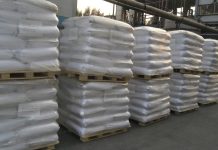Forged alludes to a creation strategy used to give specific vehicles added substances, particularly those that should be very solid, similar to cylinders, interfacing bars, and driving rods. Manufacturing incorporates warming a metallic, typically aluminum or metal, till it’s pliant after which forming it with the utilization of compressive powers. This method adjusts the metal’s grain shape, making the subsequent parts denser and stronger than those made via projecting or machining.
Forged additives are recognized for their superior electricity-to-weight ratio and resistance to fatigue and effect, making them best for excessive performance and racing automobiles in which reliability underneath extreme situations is essential. If you want to know what does forged mean in cars click on the link. Because of their sturdy nature, forged components are frequently used in engines and other excessive-pressure regions of an automobile.
Parts of Forged Car
The automobile area relies closely on forging to produce numerous additives that demand high energy and durability. Right here, we’ll explore some of the most generally forged parts in a car.
Crankshaft
The crankshaft is one of the greatest imperative parts of a gas-powered motor. It changes over the straight movement of the cylinders into rotational development, which in the end drives the vehicle. Forging is the preferred approach for producing crankshafts due to the want for extremely good electricity and fatigue resistance. A forged crankshaft can resist the huge stresses and excessive rotational speeds related to engine operation, ensuring reliability and longevity.
Connecting Rods
Associating bars interface the cylinders to the driving rod, moving the ignition power to the crankshaft. These poles appreciate significant tractable and compressive powers, making it critical for them to be genuinely vigorous and strong. Forging complements the grain shape of the metal, presenting advanced fatigue resistance and power compared to different production methods like forge ding.
Camshaft
The camshaft controls the outlet and closing of the engine’s intake and exhaust valves. Its miles are subjected to non-stop rotational forces and ought to keep particular timing to ensure efficient engine operation. Forged camshafts provide the necessary durability and wear resistance, ensuring sure most efficient performance over the car’s lifespan.
Axles
Axles are vital to the drivetrain, transmitting electricity from the engine to the wheels. They must endure large torsional stresses and effects. Forged axles are favored for their superior energy, longevity, and resistance to bending or breaking beneath heavy masses, which is particularly vital for motors that perform in disturbing conditions or bring heavy loads.
Steering Knuckles
Guidance knuckles connect the steerage device to the wheels, gambling an essential position in car maneuverability. Those components should be robust enough to handle the forces exerted in the course of steerage and braking. Forging provides vital power and reliability, making sure that the steering knuckles can resist the stresses of everyday riding and surprising impacts.
Suspension Components
Diverse suspension additives, such as control palms, ball joints, and tie rods, are typically forged. These elements have to take in shocks and vibrations from the road even while maintaining the car’s stability and management. Forged suspension components provide superior strength and fatigue resistance, contributing to a smoother and safer trip.
Transmission Gears
Transmission gears are essential for shifting strength from the engine to the wheels. They have to handle high rotational speeds and torque, requiring superb strength and precision. Forged gears have a sophisticated grain shape, ensuring dependable overall performance and durability.
Bearings
Bearings reduce friction and guide rotating or moving parts within the car. They are utilized in diverse applications, which include wheel hubs, transmissions, and differentials. Forged bearings provide superior put-on resistance and cargo-bearing capacity, extending their lifespan and enhancing typical car performance.
Engine Valves
Engine valves manipulate the waft of air and fuel into the engine and the expulsion of exhaust gases. Those valves operate in an excessive-temperature, high-pressure environment and must maintain their integrity to ensure proper engine overall performance. Forged valves offer the essential energy, warmth resistance, and sturdiness to face up to the worrying conditions inside the engine.
Conclusion
Forging is a cornerstone technique in automobile manufacturing, generating components that are essential for the cars overall performance, safety, and sturdiness. The improved mechanical residences of forged additives, including superior electricity, toughness, and fatigue resistance, make them best for applications that require high reliability under extreme operating conditions. From the engine to the drivetrain and suspension, forged components play a crucial position in making sure that cars function correctly and appropriately at some point in their lifespan.







